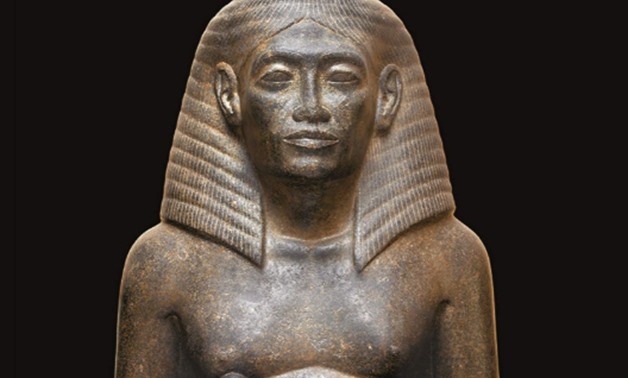
Part of the book cover - ET
CAIRO - 20 February 2020: The Publishing Department in the American University in Cairo has recently published a book titled: “Living Forever .. Self-Presentation in Ancient Egypt”. The book is published in the English language and is written by Hassan Abdul Bassir.
Abdul Bassir is the Director of the Antiquities Museum and the supervisor of Zahi Hawass Center for Egyptology at the Library of Alexandria. The book consists of 300 pages.
The book includes a collection of articles and research for a group of the most famous Egyptologists and archeologists around the world, portraying how to depict the idea behind self-representation through language and art from the beginnings of early Egyptian Dynasties to the end of ancient Egyptian history.
“Self-representation in the ancient Egyptian belief is considered the oldest and the most common element. This belief was evident in private tombs of ancient Egypt, where the personality and role of the deceased individual are intentionally represented -by engravings or photographing-, to the contemporary masses and to future generations.” said Abdul Bassir.
The book also examines how and why non-monarchical elites represented themselves in ancient Egypt, through language and art in monuments, tombs, paintings, statues, and literary texts. This was prevalent from the beginning of the ruling families to the Thirtieth Dynasty.
The book brings together articles from the world's most famous Egyptologists and archaeologists with different backgrounds. The several chapters of the book offers a new look at the form, content, and goal of self-representation in ancient Egypt.
Applying different approaches and directions, they explore how to ensure self-representation has rhetoric with deities and normal people alike, and provides rich historical and social information, in addition to providing examples of ancient rhetorical channels in the Ancient Egyptian society and highlights the concept of self in ancient Egypt.
"Self-representation was the oldest and most important component of Egyptian culture. The non-royal elite members presented themselves through language and art within the framework laid down by the history and antiquities of their era. The elements of self-representation contrasted with its heroes in titles, reigns, professions and backgrounds. They all focus on the meanings and history of the self in telling the story of life.” concluded Abdel Bassir.

The book cover - ET

Comments
Leave a Comment